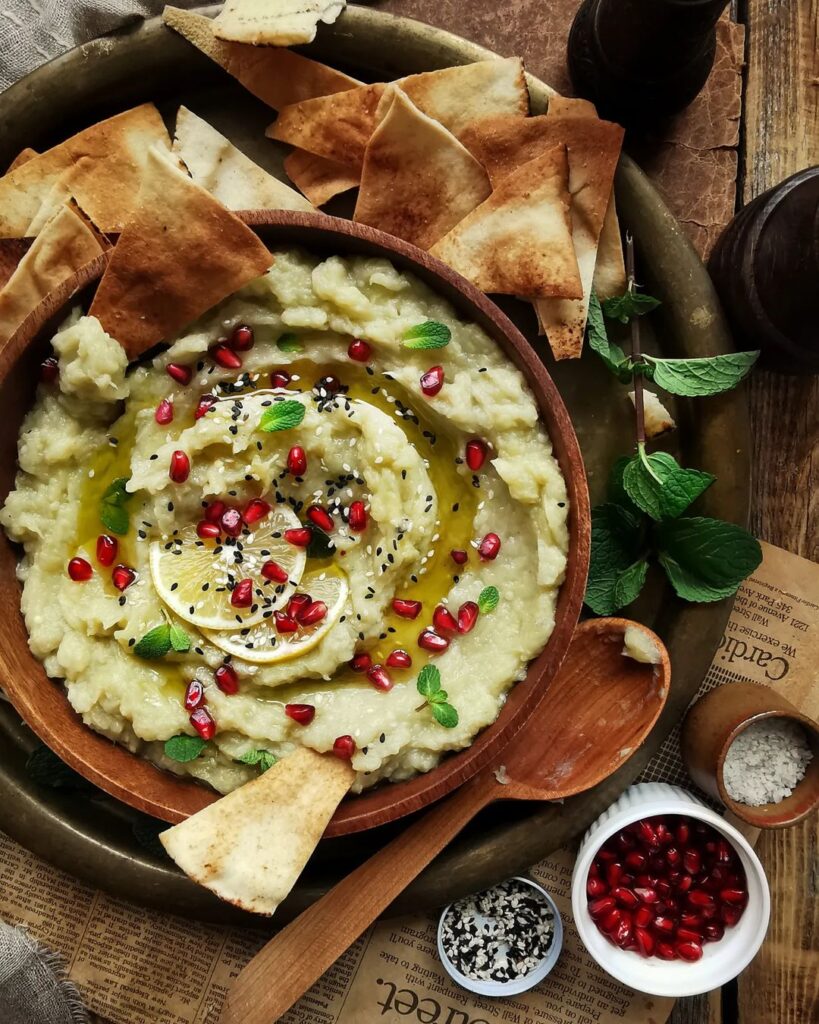
Jordan’s unique position, nestled among the Middle East, North Africa, Iran, and the Mediterranean, brings a richly satisfying cuisine to the table, familiar yet unique. It’s a place where the culinary traditions from these diverse regions blend seamlessly, creating flavors that might remind you of Turkish cuisine.
In Jordan, you’ll indulge in dishes lavished with olive oil, tahini, onions, and garlic. Pita bread and rice dishes are everyday staples. Meat lovers will rejoice in the lamb shish kebabs and döner, while sweet treats like kunefe and baklava are not to be missed. Appetizers such as hummus and zahter add a delightful start to any meal. Let’s explore traditional Jordanian food.
Table of Contents
Falafel

Falafel, falafel, falafel! When in Jordan, you must try these spiced chickpea balls, which are a standout delight from the Middle East and a personal favorite. Served with a generous side of tahini and zahter salad, falafel is one of the most popular street foods you’ll encounter in Jordan. Enjoy it stuffed in pita bread or on its own, either way, it’s perfect for eating on the go.
Recipe here
Mutabal

This appetizer, blending roasted eggplant with tahini, garlic, lemon, and plenty of yogurt, might remind you of dishes from Hatay cuisine. It’s not only delicious but also practical, making it an easy snack to whip up at home whenever the craving strikes.
Recipe here
Hummus

And of course, hummus! This staple, found on almost every restaurant menu in every city across the Middle East, including Jordan, is made from a delightful blend of chickpeas, tahini, lemon, garlic, salt, cumin, red pepper, and olive oil. It’s worth noting that in Jordan, hummus is a common part of breakfast, enjoyed in much the same way as chickpea wraps are savored in other regions.
Recipe here
Mansaf

If there’s one dish on this list that truly epitomizes Jordanian cuisine, it’s Mansaf. This traditional Jordanian dish, deeply rooted in Bedouin culture and also found in Hatay cuisine, features rice, almonds, and mutton. It’s customarily served as a main course. Importantly, Mansaf is traditionally eaten by hand, embracing the authentic dining customs of Jordan. Be sure to try it for an authentic taste of the country’s culinary heritage.
Recipe here
Maklube

Along with mansaf, maklube is one of the most popular dishes on Jordanian tables. Maklube, which means “upside down” is a dish, that is a mixture of rice and meat (beef or chicken), is cooked and served on a large tray. This way, the bottom pieces of meat stay on top of the rice. Lots of nuts and fresh herbs are used to decorate. It is usually served with a salad similar to our shepherd’s salad.
Recipe here
Shawarma

Shawarma is a popular dish in Arabic cuisine, typically made from meat such as chicken, beef, lamb, or turkey that is stacked on a vertical rotisserie. As the meat cooks, it is sliced off and wrapped in flatbread, often with garnishes like vegetables and sauces. In Jordan and other Middle Eastern countries, shawarma is a common street food, enjoyed for its rich flavors and quick preparation.
Recipe here
Shish kebab

Shish kebab, widely enjoyed in the Middle East, Levant, and Jordan, is typically grilled over a charcoal fire. This traditional cooking method enhances the flavor, giving the kebab a distinctive smoky taste cherished in the region.
Recipe here
Labneh

Labneh is a staple in Jordanian breakfasts and is essentially strained yogurt that’s thick enough to spread on bread. It’s easy to turn into a delicious appetizer by adding olive oil and fresh herbs. It pairs wonderfully with smoked salmon, offering a delightful combination of flavors. This versatile dish is not only a morning favorite but also serves as a tasty snack throughout the day.
Recipe here
Galayet Bandora

Actually, in Arabic, “bandora” refers to tomatoes, and “galayet” or “galayeh” translates to “pan.” So, the Jordanian dish “Galayet bandura” involves sautéing tomatoes along with peppers, onions, and garlic, typically cooked in a pan. This savory mix is often served over rice. If you remove the meat from the dish, it can be transformed into a delicious base for other dishes, like the Turkish menemen or a robust sauce for spaghetti, adapting to various tastes and meal preferences.
Recipe here
Tabbouleh

Tabbouleh is a classic dish from the Levant region of the Middle East, which is close to the Mediterranean. Tabbouleh is a refreshing and appetizing salad known for its simple yet vibrant mixture of finely chopped parsley, tomatoes, and bulgur, which is seasoned with lemon juice, olive oil, and garlic. This salad is celebrated for its fresh flavors and is often served as part of a mezze, complementing a variety of other dishes with its zest and texture. It’s perfect for hot weather, providing a light yet satisfying taste.
Recipe here
Zahter Salad

Zahter, known as a variety of mountain thyme, is a versatile herb prominently used in the culinary traditions of the Middle East. It’s incorporated into various dishes, enhancing salads with its aromatic flavor, and is often boiled to brew a refreshing herbal tea. The herb’s pleasant taste is especially highlighted when it’s mixed with olive oil, creating a simple yet flavorful salad dressing that brings a vibrant touch to meals.
Recipe here
Pita Bread

Pita bread is a staple in Middle Eastern cuisine, widely enjoyed across the region including Jordan. This bread is traditionally baked in a tandoor, giving it a unique texture and flavor. Filling pita with falafel—crispy fried chickpea balls seasoned with herbs and spices—creates a delicious and satisfying meal. This combination is not only a favorite among locals but also beloved by food enthusiasts around the world for its delightful blend of flavors.
Recipe here
Kunefe

Kunefe, a celebrated dessert in Jordan, is well-loved for its delightful mix of textures and tastes. This dessert layers kadayıf, a thin, noodle-like pastry, with unsalted cheese, both bathed in sweet sugar syrup and rich, melted butter. What makes the Jordanian version unique is the subtle addition of rose water, which imparts a distinctive, aromatic essence that elevates the dish. This blend of crunchy and gooey textures makes künefe a popular choice to round off meals across the region.
Recipe here



![What To See In Oman: 8 Most Beautiful Natural Sites [2024] 3 What To See In Oman](https://artandthensome.com/wp-content/uploads/2023/03/pexels-sheikh-haris-11485612-150x150.jpg)
![Discover 19 Incredible Hidden Gems In Oman [2024] 4 Hidden Gems In Oman](https://artandthensome.com/wp-content/uploads/2024/02/104819196_730125767764465_4803457049699579992_n-150x150.jpg)
